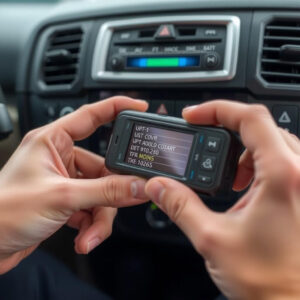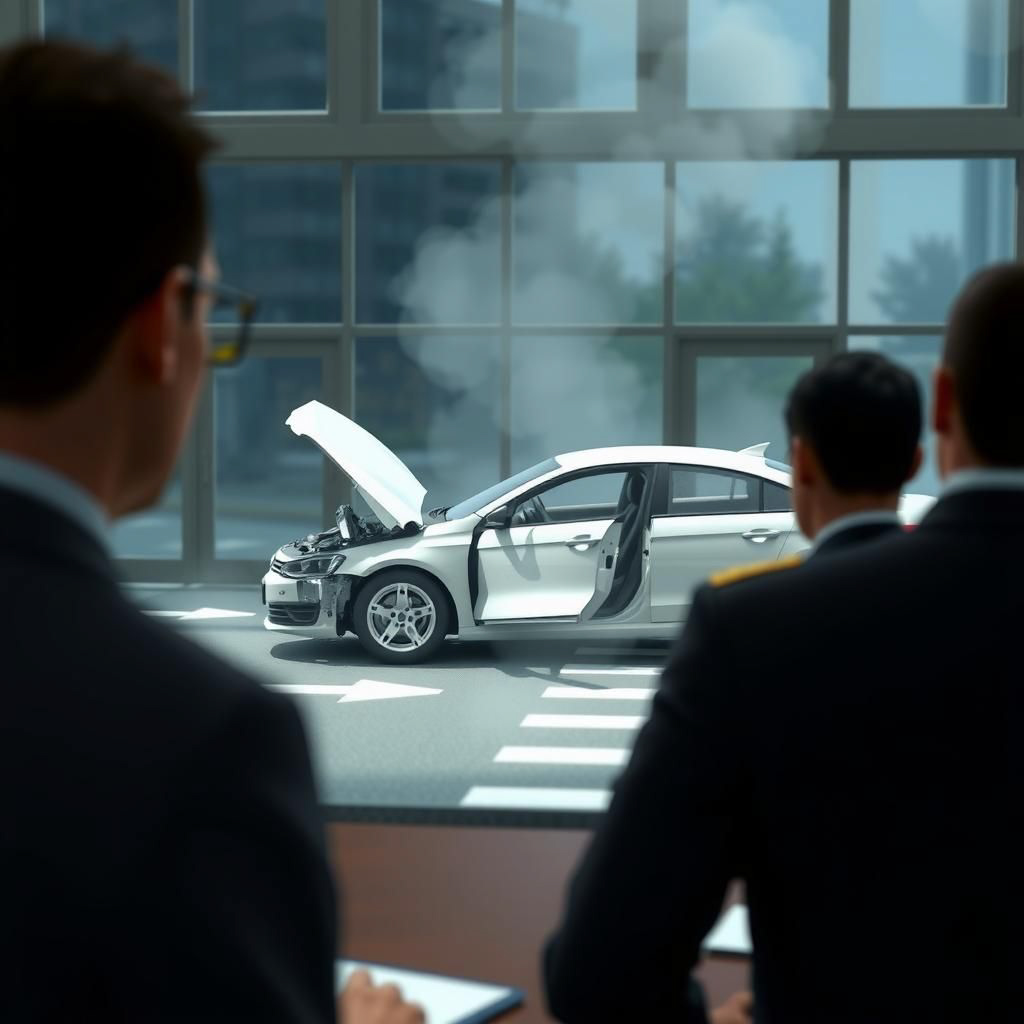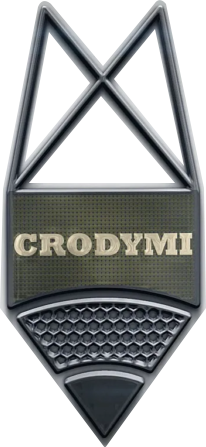Expert Accident Reconstruction Report Service
What Is an Expert Accident Reconstruction Report Service?
Accident reconstruction reports are forensic blueprints that combine physics, engineering, and data analytics to answer one question: What really happened? These reports provide invaluable insight, but their true value depends on expert interpretation. Without a thorough review by a qualified specialist, critical details can be misunderstood or overlooked.
An expert review delves into every aspect of the crash, including:
Environment: Examining road conditions, weather, lighting, and other external factors helps understand how these influenced the crash, from visibility to traction, providing essential context for the incident.
Vehicle: The vehicle’s performance during the crash is key to the analysis, including speed, braking patterns, and structural integrity, all of which help reconstruct the sequence of events and determine impact severity.
People: Understanding human factors, such as driver behavior, reaction time, and alertness, reveals how individuals contributed to or could have prevented the crash, adding another layer of critical insight.
Additionally, a full report review includes the analysis of:
EDR (black box) data: Offers data on speed, braking, and seatbelt usage, which are crucial in understanding vehicle performance at the time of the crash.
Skid mark analysis: This helps calculate pre-crash speed and assess driver reactions, providing more clarity on the moments leading up to the incident.
Vehicle damage patterns: Damage reveals impact angles and collision severity, further confirming what took place during the crash.
Road design flaws: Identifying poor signage, inadequate lighting, or malfunctioning signals that may have contributed to the accident.
When you choose our expert accident reconstruction report review, you ensure that no detail is overlooked, and every factor—environment, vehicle, and people—is analyzed with precision. Don’t leave your case to chance; let our experts provide the comprehensive, accurate analysis you need to truly understand what happened.

Every Report is Unique
At Crodymi LLC, we are trained in all areas to analyze your report from many angles, ensuring no detail is overlooked. Below is a list of all the different aspects we look at when analyzing your report:
- Certified Accident Reconstructionist (CAR)
- Advanced Heavy Vehicle Accident Reconstruction
- Motorcycle Collision Analysis
- Crash Zone
- Certified EDR Analyst (CEDRA)
- Advanced Event Data Recorder Use in Traffic Crash Reconstruction
- Event Data Recorder Analysis Course
- Vericom VC4000 DAQ
- Crash Scene Forensic Investigation and Analysis
- Forensic Scene Mapping Using Lasers
- Iwitnesstm-Close-Range Photogrammetry
- GPS Forensic Collision
- Human Factors and Tire Examination
- Biomechanics: Occupants Kinematics and Forensics
- Certified Accident Reconstructionist (CAR)
- Advanced Heavy Vehicle Accident Reconstruction
- Heavy Vehicle Accident Reconstruction
- Rollover Accident and Multiple Crash Investigations
- Motorcycle Collision Analysis
- Pedestrian/Bicycle Accident Reconstruction
- Advanced Pedestrian–Bicycle Crash Investigation
- Low Speed and Airborne Collision Analysis
- Rotational Mechanics and Critical Speed Collision Analysis
- Crash Zone
- Certified EDR Analyst (CEDRA)
- Event Data Recorder Use in Traffic Crash Reconstruction
- Advanced Event Data Recorder Use in Traffic Crash Reconstruction
- Event Data Recorder Analysis Course
- Vericom VC4000 DAQ
- Crash Scene Forensic Investigation and Analysis
- Forensic Scene Mapping Using Lasers
- Iwitnesstm-Close-Range Photogrammetry
- GPS Forensic Collision
- Human Factors and Tire Examination
- Biomechanics: Occupants Kinematics and Forensics
Why Your Case Needs This Review (and What Happens Without It)
- Insurance companies aren’t on your side. They’ll minimize payouts by disputing fault. A report review identifies
gaps in their arguments. - Not all experts are equal. Many reports lack depth—like omitting EDR data or misinterpreting skid marks. A review
ensures nothing slips through. - Juries need simplicity. Technical jargon confuses. A reviewer translates data into clear visuals (animations,
diagrams) that resonate in court.
How It Works: The 4-Step Process:
- Step 1: Evidence Audit
- Gather police reports, witness statements, EDR data, and photos.
- Example: The Tesla’s EDR showed hands-off-the-wheel alerts ignored by the system.
- Step 2: Technical Deep Dive
- Recalculate speeds, forces, and collision dynamics.
- Example: The reviewer used NHTSA crash test comparisons to prove the swerve exceeded normal human
reaction times.
- Step 3: Identify Flaws
- Scrutinize the original report for errors or omissions.
- Example: The first report overlooked the faded lane marker’s role.
- Step 4: Build a Persuasive Narrative
- Translate findings into visuals and plain-language summaries.
- Result: The jury awarded the victim $2.3 million.
When to Demand a Review (Don’t Miss These Red Flags)
- Conflicting accounts: “He ran the red light!” vs. “It was yellow!”
- Severe injuries or fatalities: High stakes demand precision.
- Commercial vehicles: Trucks and fleets have complex data systems.
- Suspected defects: Was it the driver, or a faulty brake line?
Pro Tip: If your attorney hesitates to request a review, ask why. The cost ($3,000–$15,000) often pays for itself in
higher settlements.
Why Crodymi.com Is My Go-To for Report Reviews:
I’ve seen countless firms offer accident analysis, but Crodymi stands out. Here’s why:
- EDR mastery: They extract data even from water-damaged or burnt black boxes.
- Forensic animations: Turn crash data into jury-friendly visuals.
- Transparency: No hidden fees. Period.
When every detail counts, a fresh set of expert eyes can make all the difference. Connect with Crodymi’s specialists
for a complimentary consultation that delves deep into your accident report, uncovering critical insights you might
otherwise miss. With a focus on clarity and precision, their analysis transforms complex data into a compelling
narrative for your case.

The Bottom Line
References
- National Highway Traffic Safety Administration (NHTSA). (2023). Crash Investigation Sampling System.
https://crashstats.nhtsa.dot.gov/Api/Public/ViewPublication/813667 - Crodymi Consulting LLC. (2025). Vehicle Data Extraction Services. https://crodymi.com
Navigating the Aftermath
Essential Steps After a Car Accident
Introduction

Ensure Safety:
The first and foremost concern after a car accident is the safety of all involved parties. Move to a safe location away from traffic if possible. Turn on hazard lights and set up warning triangles or flares to alert other drivers. This step helps prevent further accidents and ensures the well-being of everyone at the scene.

Check for Injuries:
Immediately assess yourself and others for injuries. Call emergency services if medical attention is required. Even seemingly minor injuries should not be ignored, as they may develop into more serious issues later. Remember, prioritizing health and well-being is paramount.

Exchange Information:
Exchange crucial information with the other parties involved in the accident. This includes names, addresses, phone numbers, insurance information, and vehicle details. Additionally, collect contact information from any witnesses present at the scene. This information is vital for insurance claims and legal procedures.

Document the Scene:
Take photographs of the accident scene from various angles, capturing vehicle damage, road conditions, and any relevant signage or signals. These images serve as valuable evidence during insurance claims and investigations. Note the date, time, and weather conditions as well.

File a Police Report:
Contact law enforcement to report the accident, especially if there are injuries, significant property damage, or disputes between parties. Obtain a copy of the police report, as it is a crucial document for insurance claims and legal proceedings.

Notify Your Insurance Company:
Promptly inform your insurance company about the accident, providing all the necessary details. Cooperate fully with the claims process, submitting the required documentation and answering any inquiries promptly. Timely communication ensures a smoother claims experience.

Seek Medical Attention:
Even if injuries seem minor initially, it is advisable to seek medical attention. Some injuries may not manifest immediately, and a medical professional can identify and address potential issues. Additionally, medical records play a crucial role in insurance claims and legal proceedings.

Preserve Evidence:
Keep all documents related to the accident organized, including medical records, repair estimates, and correspondence with insurance companies. This documentation proves invaluable in establishing the extent of damages and supporting your case if legal action becomes necessary.

Follow Up on Repairs:
Coordinate with auto repair shops to assess and repair vehicle damage. Obtain multiple repair estimates, and be cautious of any potential scams or fraud. Keep records of all transactions and communications related to the repair process.

Be Mindful of Legal Implications:
Consult with legal professionals if there are disputes, injuries, or liability issues. Understanding your rights and responsibilities is crucial, and legal guidance can help navigate complex situations, ensuring a fair resolution.
Conclusion:
Experiencing a car accident is undoubtedly stressful, but knowing the essential steps to take in its aftermath can make the process more manageable. From ensuring immediate safety to navigating insurance claims and potential legal proceedings, being proactive and thorough in your approach is key. By following these steps, individuals can better cope with the aftermath of a car accident and work towards a resolution that prioritizes their well-being and safeguards their interests.
For more info, please get in touch with Crodymi.
Author: Ricardo Mitchell
M.S., B.S.
Date: Nov 18, 2023

